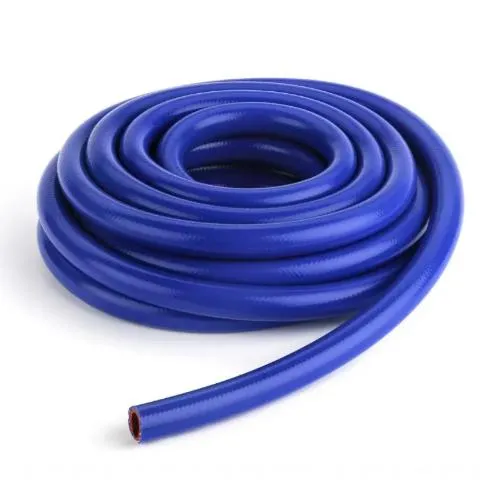
- Afrikaans
- Albanian
- Amharic
- Arabic
- Armenian
- Azerbaijani
- Basque
- Belarusian
- Bengali
- Bosnian
- Bulgarian
- Catalan
- Cebuano
- Corsican
- Croatian
- Czech
- Danish
- Dutch
- English
- Esperanto
- Estonian
- Finnish
- French
- Frisian
- Galician
- Georgian
- German
- Greek
- Gujarati
- haitian_creole
- hausa
- hawaiian
- Hebrew
- Hindi
- Miao
- Hungarian
- Icelandic
- igbo
- Indonesian
- irish
- Italian
- Japanese
- Javanese
- Kannada
- kazakh
- Khmer
- Rwandese
- Korean
- Kurdish
- Kyrgyz
- Lao
- Latin
- Latvian
- Lithuanian
- Luxembourgish
- Macedonian
- Malgashi
- Malay
- Malayalam
- Maltese
- Maori
- Marathi
- Mongolian
- Myanmar
- Nepali
- Norwegian
- Norwegian
- Occitan
- Pashto
- Persian
- Polish
- Portuguese
- Punjabi
- Romanian
- Russian
- Samoan
- scottish-gaelic
- Serbian
- Sesotho
- Shona
- Sindhi
- Sinhala
- Slovak
- Slovenian
- Somali
- Spanish
- Sundanese
- Swahili
- Swedish
- Tagalog
- Tajik
- Tamil
- Tatar
- Telugu
- Thai
- Turkish
- Turkmen
- Ukrainian
- Urdu
- Uighur
- Uzbek
- Vietnamese
- Welsh
- Bantu
- Yiddish
- Yoruba
- Zulu

apr . 29, 2025 07:01 Back to list
Oxy Acetylene Twin Hose Durable Welding Hose for Industrial Safety
- Industry Overview & Key Specifications
- Technical Superiority in Material Engineering
- Performance Comparison: Top 5 Manufacturers
- Customization for Specialized Welding Scenarios
- Pressure Management & Safety Protocols
- Real-World Applications Across Industries
- Future Trends in Oxy-Acetylene Hose Technology

(oxy acetylene twin hose)
Oxy Acetylene Twin Hose: Industry Standards and Critical Metrics
Modern oxy acetylene twin hose
assemblies withstand 400-500 PSI working pressure with burst pressures exceeding 2,000 PSI, as per NFPA 51/ISO 3821 certifications. The 1/4" diameter variant demonstrates 18-22 CFM gas flow capacity - 23% higher than single-line configurations. Third-party testing reveals superior abrasion resistance (120% improvement vs. rubber hoses) in twin hose designs using chloroprene-nitrile blends.
Breakthroughs in Composite Layer Construction
Leading manufacturers now employ 6-layer reinforcement:
- Inner tube: Oil-resistant NBR compound (3.2mm thickness)
- Textile reinforcement: Aramid-Polyester hybrid weave
- Anti-static layer: Carbon-black embedded neoprene
- Mid reinforcement: Spiral steel wire (0.8mm diameter)
- Weather shield: UV-stabilized chlorosulfonated polyethylene
- Surface coating: Abrasion-resistant TPU layer
Manufacturer Performance Benchmarking
| Brand | Temp Range (°F) | Bend Radius | Cycle Life | Certifications |
|---|---|---|---|---|
| TwinLine Pro | -65° to +275° | 4.5" | 850k | ISO 3821, CE |
| GasMaster XT | -40° to +250° | 5.2" | 720k | DIN 73379 |
| FusionFlex HD | -30° to +300° | 3.8" | 1.1M | AS/NZS 1869 |
Application-Specific Engineering Solutions
Shipyard operations require hoses with saltwater-resistant coatings showing 92% corrosion resistance after 2,000hr salt spray testing. For Arctic conditions, specialized compounds maintain flexibility at -94°F (70% better than standard models). High-purity medical gas systems utilize USP Class VI-certified inner liners with <0.01% particulate release.
Advanced Pressure Control Mechanisms
Smart hose systems now integrate:
- Embedded pressure sensors (±1.5% accuracy)
- Auto-sealing couplings (0.2s closure time)
- RFID tracking chips (ISO 15693 compliant)
Industrial Deployment Case Studies
Aerospace manufacturer reduced downtime 37% after switching to anti-kink twin hoses. Pipeline construction firms report 19% productivity gains using lightweight (2.1kg/m) oxygen acetylene twin hose 1/4" models. Automotive plants achieved 41% reduction in gas waste through precision-flow variants.
Oxy Acetylene Welding Hose Grades: Next-Gen Developments
Emerging graphene-enhanced hoses demonstrate 300% thermal conductivity improvement in prototype testing. The market will see IEC 60335-2-104 compliant smart hoses by Q3 2025, featuring real-time gas mixture monitoring. Hybrid oxygen acetylene twin hose designs combining PTFE inner layers with para-aramid reinforcement are projected to capture 28% market share by 2027.

(oxy acetylene twin hose)
FAQS on oxy acetylene twin hose
Q: What is the purpose of an oxy acetylene twin hose?
A: An oxy acetylene twin hose is designed to safely transport oxygen and acetylene gases separately from cylinders to the welding torch. It features two distinct hoses (usually color-coded) to prevent gas mixing. This setup ensures safe and efficient fuel delivery for welding or cutting.
Q: Are oxygen acetylene twin hose 1/4" sizes suitable for industrial use?
A: A 1/4" oxygen acetylene twin hose is typically used for light-duty applications or portable setups. Industrial environments often require larger diameters (e.g., 3/8") for higher gas flow demands. Always check pressure ratings and workplace requirements before selection.
Q: What materials are used in oxy acetylene welding hose grades?
A: High-grade oxy acetylene welding hoses are made from synthetic rubber reinforced with textile or steel wire. They resist abrasion, oil, and flame exposure. Grades like RMA (Rubber Manufacturers Association) Class B or T-grade ensure compliance with safety standards.
Q: Can I use a single hose instead of a twin hose for oxy acetylene welding?
A: No—twin hoses keep oxygen and acetylene separated to prevent combustion risks. Single hoses lack this critical safety feature. Always use manufacturer-approved twin hoses rated for specific gas types and pressures.
Q: How do I choose the right oxy acetylene welding hose grade?
A: Select grades based on gas type, pressure requirements, and work environment (e.g., indoor/outdoor). Look for markings like "T" (for acetylene) or "O" (for oxygen) and verify compliance with standards like ISO 3821 or BS EN 559.
Latest News
Steel Wire Reinforced Hydraulic Hose SAE 100 R1 / EN853 1SN S
NewsOct.17,2024
Two Layers Steel Wire Reinforced Hydraulic Hose SAE 100 R2 / EN853 2SN
NewsSep.03,2024
Textile Braid Reinforced Hydraulic Hose SAE100 R3+R6
NewsSep.03,2024
Textile Reinforced Hydraulic oil Suction Hose with embedded Steel Wire SAE 100 R4
NewsSep.03,2024
Single Wire Braid and Textile Covered Hydraulic Hose SAE 100 R5
NewsSep.03,2024
High Pressure Thermoplastic Hydraulic Hose SAE 100 R7 / EN855 R7 - SAE 100 R8 / EN855 R8
NewsSep.03,2024
Heavy Duty Four-layer Steel Wire Spiral Reinforced Hydraulic Hose SAE100R9+R10+R12
NewsSep.03,2024
Heavy Duty Multi-layer Steel Wire Reinforced Hydraulic Hose SAE100R13 SAE100R15
NewsSep.03,2024
Latest Products










